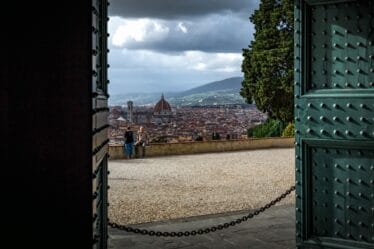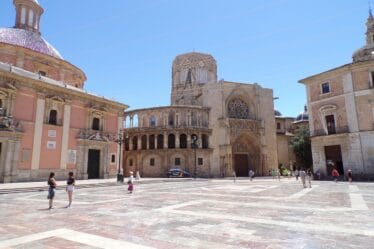

The Hidden Heart of Ancient Florence
Near the remains of the Roman amphitheater of ancient Florentia—modern-day Florence—not only did the grand stone steps rise to host roaring crowds, but essential facilities once stood to support the brutal games. Gladiator Urbico’s Forgotten Legacy, these included gyms, barracks for gladiators (known as ludi), and specialized buildings like the armamentarium (weapons depot), saniarium (hospital), spoliarium (mortuary), and the summum choragicum (storage for scenic materials).
These were the places where the familiae gladiatoriae lived and trained—tight-knit communities of slaves, professional fighters, and seasoned instructors. And it is from one of these very ludi, perhaps in Florence itself, that a mysterious and tragic figure would emerge: Urbico.
Who Was Urbico?
From Florence to Milan, a short life marked by glory and betrayal.
Urbico was a secutor, a type of gladiator trained to pursue and overpower the more nimble retiarius, who fought with net and trident. The secutor’s armor was heavy and iconic: a rounded helmet with small vision holes, a large shield, a curved sword called a sica, and armored protection on one arm and leg.
More than just a fighter, Urbico held the title of “primo palo”, meaning he was the first assistant to the instructor—a badge of honor showing excellence and leadership in the arena.
But how do we know all this? The answer lies not in Florence, but in Milan, where in 1650 a funerary stele was discovered in the Church of Sant’Antonino.
A Stone Speaks: Urbico’s Epitaph
This Roman tombstone, dating from the 3rd century AD, reveals key details of Urbico’s life. He was Florentine by origin (natione Florentinus), died tragically young at just 22 years old, and had fought thirteen times in the arena.
Urbico left behind a wife named Lauricia, and two daughters. One of them—Olimpia—was only five months old when he died. But it is the final lines of the inscription that deliver the most haunting message:
Te moneo ut quis quem vicerit occidat. Colent manes amatores ipsius.
“I warn you: whoever kills a man who has already been defeated will be cursed. His admirers will honor his spirit.”
This solemn warning seems to suggest foul play. Did Urbico spare his opponent in the arena, thinking the match was over, only to be betrayed and struck down?
The Tragic End of a Gladiator
This chilling epigraph reads like a public denunciation carved in stone. Was it an act of injustice, a betrayal that cut down a warrior who had already claimed victory?
Urbico’s story is an emotional blend of valor, family, betrayal, and loss. Though his body fell in Mediolanum (modern Milan), his name—and his memory—remain forever tied to the city that gave him birth: Florence.
Today, thanks to his funerary stele, Gladiator Urbico’s Forgotten Legacy continues to live on. He defies time, fighting once more not in the sands of an arena, but in the hearts and minds of those who read his story.
Gladiator Urbico’s Forgotten Legacy Lives On
Florence may no longer echo with the roar of ancient crowds, but below the cobblestones and beside hidden ruins, stories like Urbico’s still breathe. His tale is not only a powerful reminder of the fragility of life in Imperial Rome—it also underscores Florence’s lesser-known Roman past, still waiting to be uncovered by curious travelers and history lovers.
Learn More
- 🏛️ The Roman Amphitheater of Florence – Florence Archaeology
- 🧱 Gladiator Types and Training – British Museum
- 🪦 Funerary Inscriptions and Their Meaning – Epigraphy.info
Gladiator Urbico’s Forgotten Legacy reminds us that behind every stele, behind every Latin word carved in stone, there is a soul. And in Urbico’s case, it is the soul of a young fighter who died too soon—but who will never be forgotten.



